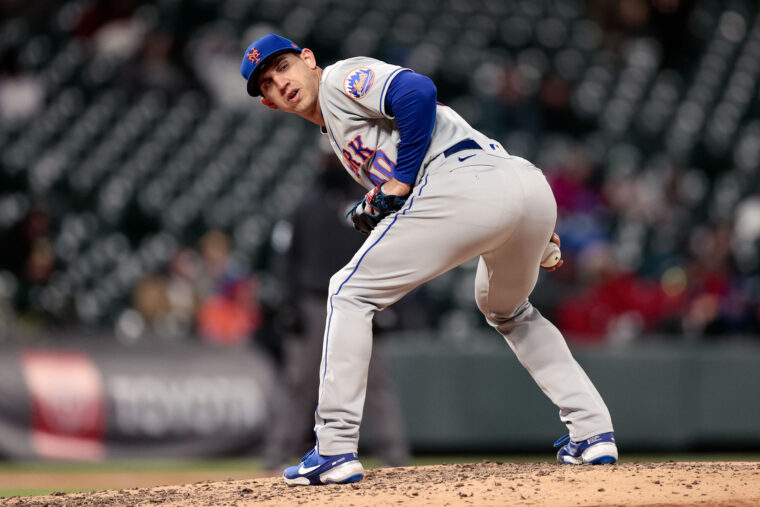
Credit: Jasen Vinlove-USA TODAY Sports
While the New York Mets’ starting rotation has received plenty of attention through the first month of the 2021 campaign, the club’s bullpen has also performed extremely well out of the gate and is one of the major reasons they currently sit at the top of the NL East division.
Though there’s still plenty of games left in the schedule, the Mets’ bullpen has produced the best FIP (2.81), the second-highest fWAR (2.1), the third-best xFIP (3.59) and the fifth-best ERA (3.04) among all 30 teams in the majors, according to FanGraphs.com.
Considering the bullpen features arms like Edwin Diaz, Trevor May, Jeurys Familia, Miguel Castro and Aaron Loup, it’s not entirely surprising to see this group excel at an extremely high level early in the season. Having said that, there’s also a chance this group could become even more successful as the year progresses, especially since reliever Seth Lugo could return from the injured list very shortly.
Along with Lugo’s impending return, receiving an improved performance from someone like Jacob Barnes, who’s posted a 5.23 ERA, 138 ERA-, 5.52 FIP, 139 FIP- and a -0.1 fWAR rating through 10 1/3 innings, could also help the Mets’ pitching staff take another step forward in 2021.
Acquired off waivers from the Los Angeles Angels last October, Barnes was coming off an underappreciated performance where he recorded career-bests in FIP (2.25), xFIP (3.24), strikeout rate (30.8%) and walk rate (5.1%), although most experts couldn’t look past his 5.50 ERA and 125 ERA-. But since New York’s front office didn’t just evaluate the 31-year-old based on his traditional metrics, he was given an opportunity to compete this spring and ultimately earned a roster spot prior to Opening Day.
Experiencing a similar situation this season, the right-hander’s traditional stats have been poor through his first nine appearances of the season, but his expected and advanced metrics suggest he’s performed respectably so far this season. In total, the veteran hurler has created a 3.62 xERA, 3.95 xFIP, .304 xwOBA, .219 xAVG, .241 BABIP, 22.7% strikeout rate, 4.5% walk rate and a career-high 56.3% GB rate.

Credit: Isaiah J. Downing-USA TODAY Sports
Taking this even further, the Mets were extremely intrigued by Barnes’ three-pitch mix this offseason, particularly his high-80s cutter, which he’s thrown nearly 50 percent of the time and has been very effective with this season. Serving as his most reliable offering, the former 14th-round pick already featured impressive vertical and horizontal movement on his cutting fastball before arriving to Queens and has improved in each of those areas while working with the team’s coaching staff.
After averaging 26.9 inches of drop last season, the former Angels’ cutter is now producing an average of 25.3 inches, which is 0.9 inches more drop than similar cutters at his velocity. As for its horizontal movement, it averaged 4.6 inches of break in 2020 and has increased that up to 5.1 inches in 2021, tied for the 11th-highest average among all pitchers who’ve thrown at least 50 cutters, according to BaseballSavant.com.
Additionally, his cutting fastball also features 2.8 inches more break than similar pitches at his velocity, which is tied for the eighth-most added drop among qualified pitchers.
Thanks to this increased movement, Barnes has been able to locate his primary weapon much more effectively and that’s something he struggled to accomplish at times last season. As a result, his cutter was finishing in the middle of the strike zone far too often, allowing opposing hitters to create a troubling .311 AVG and a .283 xAVG against it.

Source: BaseballSavant.com
But with his improved command, Barnes has been locating his cutter down and away to right-handers, low and inside to left-handers, largely keeping it out of the heart of the zone and resulting in a .235 AVG and a .242 xAVG.

Source: BaseballSavant.com
Even though the 6′ 2″ hurler has allowed a .647 SLG and a 16.7% barrel rate against his cutter this season, its .503 xSLG and 88.4 mph average exit velocity likely suggests he’s been a little unlucky up to this point. Since it’s also recorded a career-best 66.7% GB rate and a -3-degree average launch angle, these high amounts of ground balls are destined to translate into outs eventually, it’ll probably just require a larger sample size for his results to even out.
Paired with its ability to induce plenty of ground balls, Barnes’ cutting fastball has also served as his most reliable swing and miss offering in the past and that’s remained true in 2021, as it’s produced a 31.0% whiff rate, 27.8% strikeout rate and a 26.3% chase rate. But if he were to reduce the number of cutters that were located in the zone during two-strike counts, which currently sits at 46.7%, all three of those metrics would likely increase dramatically moving forward.
Considering the Florida native posted a career-high 34.8% strikeout rate, 40.6% whiff rate and a 45.4% chase rate with his cutter last season, it’s certainly capable of serving as an elite strikeout weapon, although the key to unlocking that ability consistently is commanding it near the edge of the zone when he’s ahead in the count.
For the most part, Barnes was utilized in low-leverage situations during the first month of the season, however, he’s primarily appeared in the seventh and eighth innings since the calendar changed to May. As a result, Florida Gulf Coast product has been provided some high-leverage opportunities this month, ultimately earning him his first win and hold of the campaign.
Once Lugo returns, Barnes will likely resume his low-leverage role during the fifth and sixth innings, but that doesn’t mean he wouldn’t be a candidate to assume a larger job if needed. At the very least, it’d provide manager Luis Rojas and his staff some much-needed comfort knowing they have a reliable reliever waiting in the wings if a drastic problem arises.















